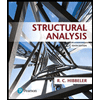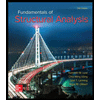Short problems: 1.1 Sketch the buckling shapes of columns with the following boundary conditions: (i) pinned-pinned ends, (ii) fixed- fixed ends, (iii) pinned-fixed ends, (iv) fixed-free ends. Show the effective length on the buckling shape, as KL. Which column is more prone to buckle (lowest critical load), and which column is less prone to buckle (highest critical load). 1.2 Draw a pinned-pinned column with a rectangular section with width b=h/10 (h=height of section) and length L=20h. Identify the weak axis. Compute the slenderness in the strong and weak directions. Compare the Per loads for buckling around the strong and the weak axis: what is the ratio between Per values?
Short problems: 1.1 Sketch the buckling shapes of columns with the following boundary conditions: (i) pinned-pinned ends, (ii) fixed- fixed ends, (iii) pinned-fixed ends, (iv) fixed-free ends. Show the effective length on the buckling shape, as KL. Which column is more prone to buckle (lowest critical load), and which column is less prone to buckle (highest critical load). 1.2 Draw a pinned-pinned column with a rectangular section with width b=h/10 (h=height of section) and length L=20h. Identify the weak axis. Compute the slenderness in the strong and weak directions. Compare the Per loads for buckling around the strong and the weak axis: what is the ratio between Per values?
Chapter2: Loads On Structures
Section: Chapter Questions
Problem 1P
Related questions
Question
100%
please sketch what is asking for in the picture

Transcribed Image Text:Short problems:
1.1 Sketch the buckling shapes of columns with the following boundary conditions: (i) pinned-pinned ends, (ii) fixed-
fixed ends, (iii) pinned-fixed ends, (iv) fixed-free ends. Show the effective length on the buckling shape, as KL.
Which column is more prone to buckle (lowest critical load), and which column is less prone to buckle (highest
critical load).
1.2 Draw a pinned-pinned column with a rectangular section with width b=h/10 (h=height of section) and length
L=20h. Identify the weak axis. Compute the slenderness in the strong and weak directions. Compare the Per loads
for buckling around the strong and the weak axis: what is the ratio between Per values?
Expert Solution
This question has been solved!
Explore an expertly crafted, step-by-step solution for a thorough understanding of key concepts.
This is a popular solution!
Trending now
This is a popular solution!
Step by step
Solved in 2 steps with 1 images

Recommended textbooks for you


Structural Analysis (10th Edition)
Civil Engineering
ISBN:
9780134610672
Author:
Russell C. Hibbeler
Publisher:
PEARSON

Principles of Foundation Engineering (MindTap Cou…
Civil Engineering
ISBN:
9781337705028
Author:
Braja M. Das, Nagaratnam Sivakugan
Publisher:
Cengage Learning


Structural Analysis (10th Edition)
Civil Engineering
ISBN:
9780134610672
Author:
Russell C. Hibbeler
Publisher:
PEARSON

Principles of Foundation Engineering (MindTap Cou…
Civil Engineering
ISBN:
9781337705028
Author:
Braja M. Das, Nagaratnam Sivakugan
Publisher:
Cengage Learning

Fundamentals of Structural Analysis
Civil Engineering
ISBN:
9780073398006
Author:
Kenneth M. Leet Emeritus, Chia-Ming Uang, Joel Lanning
Publisher:
McGraw-Hill Education


Traffic and Highway Engineering
Civil Engineering
ISBN:
9781305156241
Author:
Garber, Nicholas J.
Publisher:
Cengage Learning